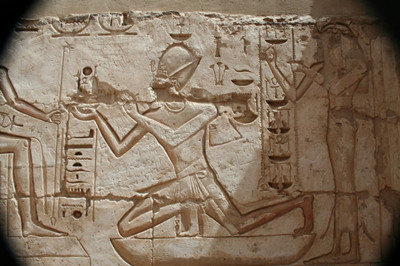"It's a fine image of bashing-so it's violent, it's elegant, expressive, and it's beautiful as well."
“這威攝力的絕妙寫照—充滿了暴力、典雅、表現力以及美感。”史蒂夫貝爾說道。
Today's object shows us that in the Egypt of the pharaohs, the answer to the question of how to exert leadership and state control over a large population was quite simple: force.
今天的物品向我們展示了對于古埃及的法老而言,如何發揮領導力與領導一個人口眾多的國家呢?最簡單的答案就是:權力。
If you're going to talk about the Egypt of the pharaohs, the British Museum gives you a spectacular choice-monumental sculptures, painted mummy cases, and much much more but, as we're talking about a society that was created by its river, I've chosen an object that came quite literally from the mud of the Nile.
如果你想談談關于埃及的法老,大英博物館提供了極為壯觀的選擇:不朽的雕塑、彩繪木乃伊棺槨等等,種類繁多,不可勝數;然而我們想要談論的是一個河流哺育起來的國度,我現在選擇的這物品,毫不夸張地說,正是來自尼羅河的泥槳。
It's made from a tusk of a hippo, and it belonged to one of Egypt's first pharaohs-King Den. Perversely for an object that's going to let us explore power on a massive scale, it is absolutely tiny.
它由河馬的獠牙制成,屬于埃及法老之一的國王丹所有。反差強烈的是,將要帶領我們探索強大權力,卻是一件微不起眼的小物品。
I'm holding it now. It's about one and a half inches square, it's very thin and it looks and feels a bit like a modern-day business card. But, in fact, it's a label-a label that was once attached to a pair of shoes; not any old shoes-these were sandals of the highest status, because this little ivory plaque is a name tag for an Egyptian pharaoh, made to accompany him as he set off to the afterlife.
我現在就拿在手心里。它大約有一英寸半,正方形,非常的薄,外觀和感覺有點像是現代名片。但事實上它是一件標簽,附在一雙鞋上的標簽;不過可不是隨隨便便的一雙爛鞋,而是一雙最高地位人穿的涼鞋,因為這張小小的牙牌是一位古埃及法老的名片,制造出來以供他來世使用。












